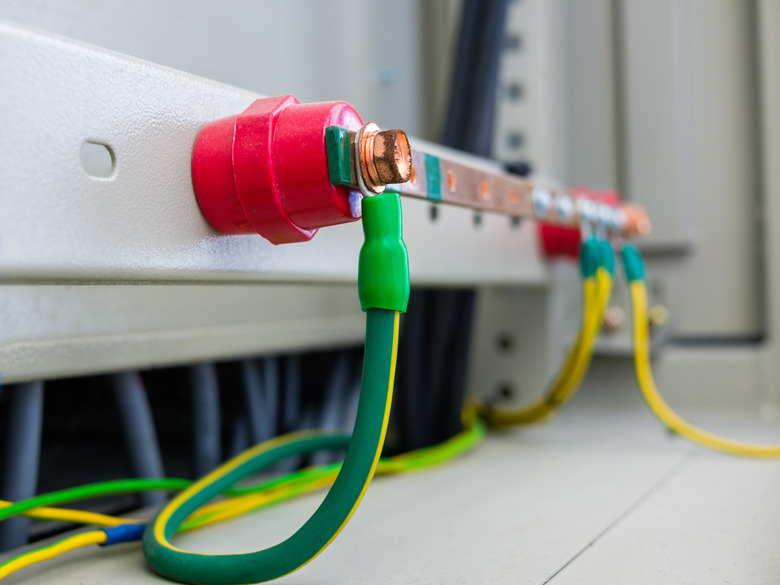How To Test Electrical Conductivity
Electrical conductivity is a physical property that indicates how well a given material conducts electricity. A current originates when electrical charges flow in response to a difference in electrical potential. The conductivity is defined as the ratio of the density of this current to the strength of the electric field. The electrical conductivity can be calculated measuring the resistance, area and length of the test material. The test material typically has a box-like shape for ease of measuring.
Step 1
Use a four-terminal ohmmeter for greater accuracy. This type of ohmmeter is more accurate because one pair of terminals measures current, while the other pair measures voltage. This allows the ohmmeter to ignore the resistance of the first pair of terminals.
Step 2
Measure the resistance of the test material with a four-terminal ohmmeter by placing each pair of terminals on opposite ends of the test material.
Step 3
Record the resistance of the test material. The ohmmeter automatically performs the calculation R = V/I where R is the resistance in ohms, V is the voltage in volts and I is the current in amperes.
Step 4
Measure the dimensions of the test material in meters. The length is the distance between the ohmmeter terminals. The area is the area of the surface that the ohmmeter is measuring current across.
Step 5
Calculate the electrical conductivity from the resistance, length and area of the current. The resistivity is given as p = RA/l where p is the resistivity, R is the resistance, A is the area and l is the length. The conductivity is s = 1/p where s is the conductivity. The conductivity is therefore s = l/AR and will be measured in ohm^-1 meters^-1, also known as siemens.
Things Needed
- 4 terminal ohmmeter
- test material
References
Cite This Article
MLA
Robinson, Allan. "How To Test Electrical Conductivity" sciencing.com, https://www.sciencing.com/test-electrical-conductivity-5183607/. 16 July 2009.
APA
Robinson, Allan. (2009, July 16). How To Test Electrical Conductivity. sciencing.com. Retrieved from https://www.sciencing.com/test-electrical-conductivity-5183607/
Chicago
Robinson, Allan. How To Test Electrical Conductivity last modified March 24, 2022. https://www.sciencing.com/test-electrical-conductivity-5183607/
